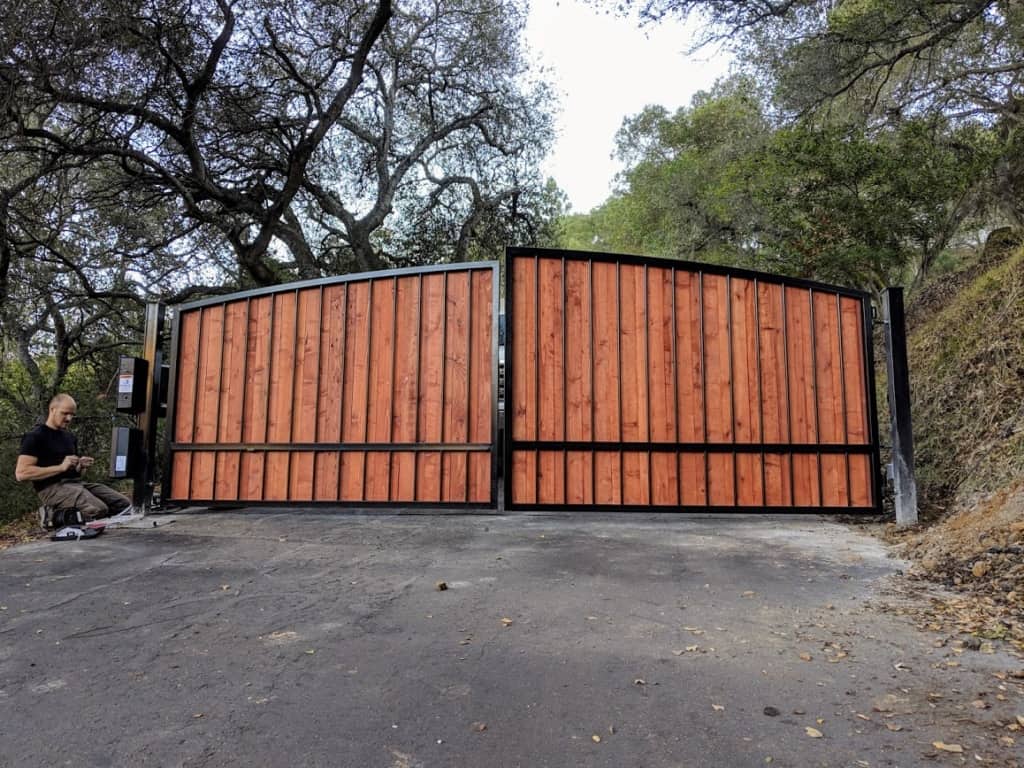[ad_1]
Automatic gates are a convenient addition to any property. They offer privacy and security, while also enhancing the overall aesthetic of the property. However, understanding the components of an automatic gate is crucial in ensuring it operates efficiently and effectively. This article will explore the various components of an automatic gate and their functions.
1. Power supply
The power supply is the main component of any automatic gate system. It provides the energy required to drive the gate’s motor, control board, and other components. The power supply can come from the main electrical grid or from an alternative source such as solar energy. The power supply should be reliable and consistent to ensure the automatic gate operates smoothly.
2. Gate motor
The gate motor is responsible for moving the gate’s leaf or panels, depending on the gate’s design. The motor can be installed above or below the ground, and it can be either hydraulic or electric. The hydraulic motor is more powerful and can handle heavier gates, while the electric motor is more suitable for lightweight gates. The gate motor should be compatible with the power supply and the control board.
3. Control board
The control board is the brain of the automatic gate system. It receives signals from the remote control, keypad, or other entry systems and sends signals to the gate motor, sensors, and other components. It also detects and prevents any malfunctions, such as overloading, overheating, or obstruction.
4. Sensors
The sensors are essential components of an automatic gate system as they ensure the safety of people and vehicles passing through the gate. The primary sensors are the obstruction sensor and the safety sensor. The obstruction sensor detects any obstacles in the path of the gate and prevents the gate from closing. The safety sensor detects any objects or persons in the gate’s path and immediately stops the gate from closing. The sensors should be accurately calibrated to avoid false detections and increase reliability.
5. Remote control or keypad
The remote control or keypad is the user interface of the automatic gate system. It allows users to open and close the gate and control its direction and speed. The remote control can be wireless or wired, while the keypad requires a code for entry. The remote control or keypad should be compatible with the control board and should be of high quality to ensure durability.
6. Emergency release
The emergency release is a manual device that allows users to open the gate in case of a power outage or other emergency situations. It usually consists of a key-operated lock or a lever that disengages the gate motor’s mechanism. The emergency release should be easily accessible and should be secured to avoid unauthorized use.
FAQs Section
Q: What is the difference between a hydraulic and electric gate motor?
A: A hydraulic motor is more powerful and can handle heavier gates, while an electric motor is more suitable for lightweight gates. Hydraulic motors are generally more expensive and require more maintenance.
Q: How do I choose the right gate motor for my gate?
A: The gate motor’s size and power should match the weight and size of the gate. You should also consider the frequency of use, the speed requirements, and the environmental conditions.
Q: How do sensors work in an automatic gate system?
A: The sensors emit a signal that is reflected back when it hits an object. If the signal does not return within a certain time, the obstruction sensor detects an obstacle, and the safety sensor detects an object or person in the path of the gate.
Q: Can I control my automatic gate through my smartphone?
A: Yes, there are various apps and smart home systems that enable you to control your automatic gate through your smartphone.
Q: How often should I maintain my automatic gate?
A: You should perform regular maintenance checks, at least once a month, including cleaning, lubrication, and inspection of the components. You should also schedule annual professional maintenance checks to ensure optimal performance and safety.
Conclusion
Understanding the components of an automatic gate is essential in ensuring the safety and reliability of your gate. The power supply, gate motor, control board, sensors, remote control or keypad, and emergency release are the main components of an automatic gate system. Each component plays a critical role in the gate’s operation and should be chosen and maintained carefully. By following the guidelines and regularly performing maintenance checks, you can enjoy the convenience and security of an automatic gate for years to come.
[ad_2]


